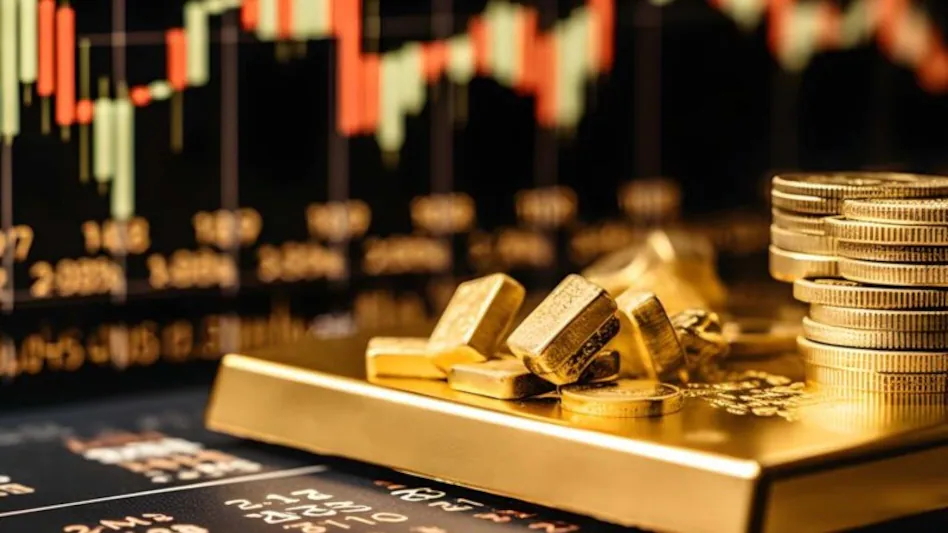Gold has surged past the historic $3,000-per-ounce mark for the first time, reflecting strong investor demand amid ongoing economic uncertainty, geopolitical risks, and expectations of monetary policy shifts. On March 14, spot gold edged up 0.4% to $3,000.87 per ounce by 10:15 GMT, while U.S. gold futures climbed 0.7% to $3,013.60. The question on many investors’ minds now is whether this rally has more room to run and if it is still a good time to buy.
What’s Driving Gold’s Unprecedented Surge?
Several key factors have contributed to gold’s record-breaking ascent, making it one of the best-performing assets in 2024:
Economic Uncertainty: Global markets are grappling with persistent concerns over economic growth, inflation, and a potential slowdown in major economies. With central banks navigating delicate economic conditions, investors are seeking refuge in gold, which has historically been a hedge against economic instability.
Geopolitical Tensions: Ongoing trade disputes, rising conflicts in various regions, and heightened tensions between major global powers have pushed investors toward gold as a safe-haven asset. In times of uncertainty, gold tends to gain traction as a store of value.
Interest Rate Expectations: The U.S. Federal Reserve’s monetary policy is a crucial driver of gold prices. With expectations of interest rate cuts later this year, investors anticipate lower returns on interest-bearing assets, making gold a more attractive investment. Historically, lower interest rates reduce the opportunity cost of holding gold, leading to increased demand.
Central Bank Purchases: Several central banks have been increasing their gold reserves to diversify away from the U.S. dollar. Countries like China and India have been aggressively accumulating gold, adding to the upward price momentum.
Weaker U.S. Dollar: A weaker dollar generally benefits gold, as it becomes cheaper for holders of other currencies. Recent declines in the dollar index have contributed to gold’s price surge, reinforcing its status as a global safe-haven asset.
Is It Too Late to Invest in Gold?
While gold has already reached historic highs, opinions are divided on whether this rally will continue. Some analysts believe that gold still has room to climb, while others caution that the metal may be overbought.
Reasons Gold Could Continue Rising:
Further Rate Cuts: If the Federal Reserve follows through with multiple interest rate cuts, gold could gain even more upside potential.
Persistent Inflation: Inflation remains a concern for many economies, and gold is traditionally seen as a hedge against rising prices.
Geopolitical Risks: With continued geopolitical instability, demand for gold as a safe-haven asset could sustain its rally.
Reasons Gold Could See a Correction:
Profit-Taking: After such a strong rally, some investors may decide to take profits, leading to short-term pullbacks.
Stronger U.S. Economic Data: If economic data from the U.S. improves, risk appetite could shift back to equities and reduce gold’s appeal.
Central Bank Policy Shifts: If the Federal Reserve signals a pause or reversal in its rate-cutting plans, gold’s bullish momentum could weaken.
Should You Buy Gold Now?
Deciding whether to invest in gold at this stage depends on your investment strategy and risk tolerance. Here are some key considerations:
Long-Term Investors: If you’re looking for a long-term hedge against economic uncertainty and inflation, buying gold—even at record highs—could still be a prudent move. Historically, gold has maintained its value over time, making it a strong defensive asset.
Short-Term Traders: If you’re a short-term trader, caution is warranted. With gold at all-time highs, there could be volatility ahead, and timing the market perfectly is always a challenge.
Portfolio Diversification: Gold can be a valuable addition to a diversified portfolio, especially as a hedge against downturns in equities and fiat currency depreciation.
Investment Options: Investors have various ways to gain exposure to gold, including:
Physical Gold: Buying gold bars, coins, or jewelry.
Gold ETFs: Exchange-traded funds that track gold prices.
Mining Stocks: Investing in gold mining companies, which tend to move in correlation with gold prices but with higher volatility.
Gold Futures & Options: More advanced instruments for those familiar with derivatives trading.
Expert Opinions on Gold’s Future
Market analysts remain split on how high gold could go in this rally. Some predict further gains, with price targets ranging between $3,200 and $3,500 per ounce if economic conditions remain favorable for the metal. Others warn that a pullback to $2,800–$2,900 could occur if market sentiment shifts toward riskier assets.
Gold’s long-term trajectory will depend on macroeconomic factors such as central bank policies, inflation trends, and geopolitical stability. While short-term volatility is inevitable, many experts agree that gold remains a valuable asset in uncertain times.

